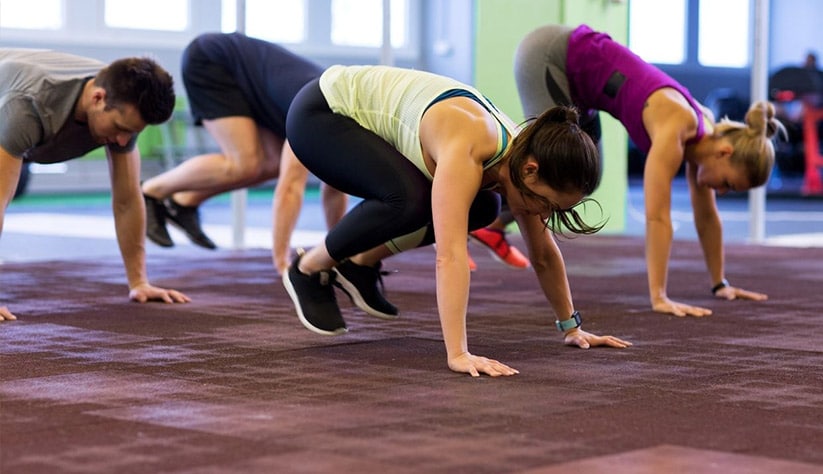The Importance of Exercise For Diabetics
Regular physical activity is valuable for everyone, and can have health benefits ranging from weight loss to increased energy to better mood to lower risk of chronic disease.
However, according to experts like the American Diabetes Association it can be even more valuable to people with prediabetes, type 1 diabetes, type 2 diabetes, and any other form of diabetes.
This is because regular physical activity has been proven to help increase the rate at which you burn energy and reduce your insulin resistance, which are crucial to reversing type 2 diabetes and making sure that you have accurate blood glucose control in type 1 diabetes.
In this article, we’ll explore the benefits of exercise for different types of diabetes, what to be careful about when exercising, and also a few fun tips and suggestions for getting started on your exercise plan.
Physical Activity And Type 1 Diabetes
The American Diabetes Association (ADA) points to exercise as a crucial part of life for anyone with type 1 diabetes for a number of reasons.
Since individuals with type 1 diabetes lack the ability to produce endogenous (internal insulin), staying insulin sensitive can make it much easier to control your blood glucose (blood sugar levels), and also mean that you’ll require less insulin on average.
Exercise also helps keep your blood pressure and cholesterol in a healthy range, which would be good for anyone, but can be especially valuable for people with type 1 diabetes, who are more likely to have high cholesterol, triglycerides, and blood pressure.
Finally, research has shown that exercise can actually reduce your oxidative stress and inflammation, which are both found more often in individuals with type 1 diabetes.
So there are plenty of reasons to exercise as an individual with type 1 diabetes. However, there are a few aspects of exercise to be aware of if you have type 1 diabetes, which we’ll explain a bit later.
Physical Activity And Type 2 Diabetes
The ADA and other experts also put exercise as a top recommendation for people with type 2 diabetes. Not only can it help keep your blood glucose to a manageable range in the short term, but its anti-obesity effects and cardiovascular benefits can be transformative.
Ultimately, the underlying cause of type 2 diabetes is insulin resistance, which is caused by a buildup of fat in cells which are not meant to store it, and exercise can be key to reversing this condition.
And if you reverse insulin resistance, you’re most of (if not all of) the way to reversing type 2 diabetes.
Again, when ramping up an exercise plan with any form of diabetes, there are a few key characteristics to be aware about, which we’ll explain in the next section.
Potential Risks Of Exercising With Diabetes

There are three main risk factors for individuals with diabetes exercising, especially when just starting a new regiment or workout plan. These risk factors are: fluctuations of your blood glucose, joint complications, and secondary challenges like neuropathy and retinopathy.
Blood Glucose Fluctuations
Many people with diabetes struggle with blood glucose fluctuations when they first increase their exercise.
This can come in the form of hypoglycemia, which often occurs because you burn more glucose than usual due to exercise, or hyperglycemia, in which your body produces more glucose than usual after a workout.
Add in the fact that many people suffering from diabetes also suffer from other metabolic conditions like metabolic syndrome, and it can be difficult to exercise at first.
For this reason, many diabetes experts focus on how to increase your exercise gradually without losing blood glucose control (which we’ll touch on below).
Joint Complications
Another possible challenge facing individuals working on diabetes is joint pain and complications. Diabetes can generally worsen joint pain in three ways — either through increased inflammation, by damaging the nerve endings around your body, or through an increased risk of arthritis.
Add in that individuals with diabetes are more likely to be overweight, and there are definitely some initial challenges to be cautious of when starting to exercise.
Symptom Flare Ups
Finally, a secondary difficulty of fluctuating blood glucose is the possibility that some complications of diabetes — like retinopathy (visual disturbances), neuropathy (nerve damage or confusion), and fatigue — can also flare up.
If you’re starting to exercise and notice that any of these symptoms start to hit and persist after stopping, reach out to your health care provider.
So Is It Worth The Risk?
Yes, overwhelmingly so. Experts put exercise as one of the fundamental steps to improving your diabetes health, and almost all of the risks can be handled safely by scaling up your exercise slowly and working with your care provider to come up with a strategy that works for you.
Tips And Tricks For Exercising With Diabetes

There are two major things that people with diabetes can do to make sure that they’re prepared for exercise.
The first is to have a plan, and make sure that you’re not overexerting yourself too quickly and either hurting yourself or going beyond the limits of what your body can handle.
Working with your diabetes care provider can help you design an exercise routine that works for you and your body, and can help you scale up to low, medium, and even high-intensity exercises. (We’ll touch on some examples of these exercises in the next section.)
The second is to make sure that you have glucose tablets or other easily accessible sources of carbohydrates available.
Any time you push yourself while exercising, it’s possible that you’ll start to have low blood glucose, but this can easily be combated by having healthy snacks or glucose tablets available.
It may seem tough at first, but gradually pushing yourself will be key to increasing your insulin sensitivity and wellness in the long term!
Making Exercise Awesome
There are plenty of reasons that people give for not exercising. Not having enough time, or motivation. Not being able to afford the cost of gyms, or finding certain exercises boring or repetitive.
Add in that many people feel like they have to suddenly jump up and be performing at professional-level intensity, and starting to exercise can be a daunting task.
Fortunately, as we explained above, it’s actually smarter to take things slow and gradually build up as your body adjusts to your new routine. And there are many more options for exercising than you might think no matter what intensity you’re targeting.
As you start to work with your diabetes care provider or coach to come up with an exercise program, broaden your mind and consider some of the following ideas that can make exercise a highlight of your day.
Low-Intensity Exercise

Low-intensity, low-impact physical activity is a great place to start for anyone who’s just beginning an exercise program, as the research shows that even this gentle form of exercise can have positive effects on nearly every aspect of diabetes.
Tai chi, yoga, brisk walking, a casual swim, biking from place to place, a hike — as long as your heart rate is elevated, you’re doing an aerobic activity, and your body will reap the benefits.
Moderate-Intensity Exercise

Moderate intensity exercise is where the benefits of physical activity on your diabetes health really start to kick in. As you grow more comfortable, physically fit, and capable of controlling your blood glucose, this type of exercise will start to take your health to the next level.
In fact, some studies have shown that moderate-intensity exercise can be a must for people at any level of physical fitness and diabetes health.
One study showed that moderate-intensity exercise, interspersed with occasional high-intensity exercise, was an ideal balance for people with type 1 diabetes.
And again, there are many ways to perform medium-intensity exercise that can be fun, engaging, and interesting.
Sure, traditional gym forms of aerobic exercise using body weight, free weights, resistance bands, etc., as well as strength training to build muscle mass are all very effective.
But at the same time, finding a passion for a new sport like kayaking, soccer, mountain biking, tennis, pickleball, freediving, or many others can provide the same level of intensity along with the joy of exploring the world or socializing with team members.
High-Intensity Exercise

High-intensity exercise, or vigorous-intensity exercise, is the highest classification of exercise, and holds some incredible potential for people with diabetes. However, it also contains a few risks to be aware of due to the cardiovascular load that this exercise places on your body.
Since intense cardiovascular exercise, which is classified as exercising at 70+% of your aerobic capacity, involves pushing your body to process energy quickly, many people with diabetes have some natural concerns about these activities.
And this is where our first two pieces of advice return. Having a cohesive plan/not scaling up too quickly, and also having snacks or easy carbohydrates available are especially important when you’re exercising, as well as making sure to monitor your blood glucose for an hour or so after the workout.
However, the benefits of intense exercise are powerful, and vastly outweigh the risks.
This isn’t to say that you should always train or exercise at a very high intensity level. In fact, most studies of high-intensity training center around the opposite, recommending high intensity interval training, where you intersperse portions of moderate and high intensity.
There are many sports that also fit this description, like competitive soccer, basketball, swimming, and tennis, cycling, river rafting, and many others. Again, take it easy, and consult your care provider, and your body will thank you!
The Final Word
Though exercise can be a bit intimidating, especially if you’re having trouble with blood glucose control, it can be incredibly beneficial in the long run, an excellent way to have fun, and one of the key steps to getting control of your diabetes health.
That’s why we recommend getting medical advice from your diabetes care provider before starting any regimen, and steadily increasing your workload and adjusting your diet to match, rather than trying to ramp up too quickly.
Then, we always recommend finding exercise that you love! The only exercise regimen for you is the one that you can stick with, so take your time, explore options, and know that it’s okay if you don’t nail it the first time. Once you do, you’ll be amazed at the difference.
If you’d like to learn more about exercise and how it can help with lower blood sugar, improve your mood and energy, and significantly improve your diabetes health, you can check out our DIY guide to diabetes, which also has a number of different suggestions for fun ways to get active!
Lower Your A1c and Get to Your Ideal Body Weight ... Guaranteed

Your results are guaranteed. Join more than 2,000 members today
Personalized coaching puts you in immediate control of your diabetes health, helps you gain energy, improves your quality of life, and reduces or eliminates your meds.




